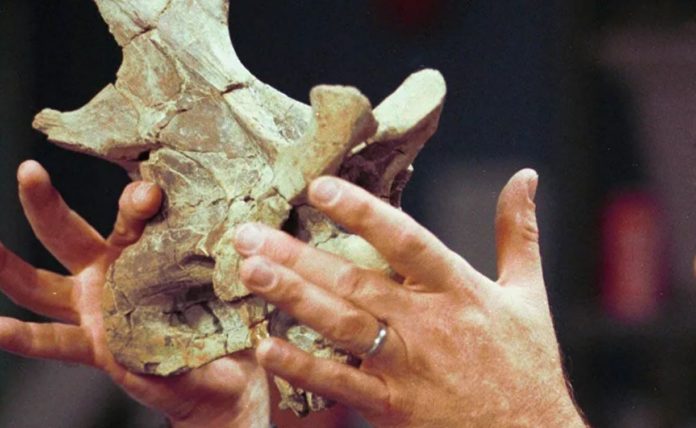The fossilized bones of a dinosaur, excavated in Argentina, could belong to the largest animal that has ever walked on the surface of our planet.
A group of local paleontologists found the remains of the huge dinosaur, including 24 tail vertebrae and some adjacent pelvic bones, in Neuquén province.
Although the discovery took place in 2012, the event was detailed on January 12 in a study published in the scientific journal Cretaceous Research.
It is believed that the bones belong to a titanosaur, one of the largest sauropods. The latter were a group of dinosaurs characterized by their large size, thick legs and elongated necks and tails, detailed The Daily Mail.
- Does This Mean We Stopped Being Animal and Started Being Human Due to ‘Copy Paste’ Errors?
- The One Lifestyle Choice That Could Reduce Your Heart Disease Risk By More Than 22%
- Aging: This Is What Happens Inside Your Body Right After Exercise
- Immune-Boosting Drink that Mimics Fasting to Reduce Fat – Scientists ‘Were Surprised’ By New Findings
- Gun Violence in America: What They Don’t Talk About at the Debate
Fossils do not appear to match other known sauropod dinosaurs, suggesting that the bones found in the so-called Candlestick Formation, in Neuquén, belonged to an unknown species until now. Researchers are sure, however, that it was a huge animal.
“It is clear that the titanosaur partially recovered from the Candeleros Formation can be considered one of the largest titanosaurs. Probably of a body mass comparable to Patagotitan or Argentinosaurus or even larger,” the study highlights.
Patagotitan, first found in Argentina in 2013, is believed to have measured over 37 meters and weighed between 55 to 57 tons.
Due to the partial nature of the titanosaur find, the researchers said it has not yet been possible to estimate how much the dinosaur, named MOZ-Pv 1221, would likely have weighed in life.
